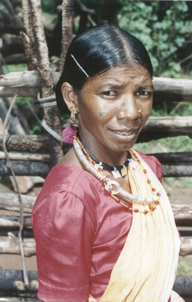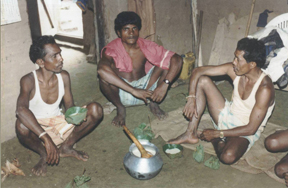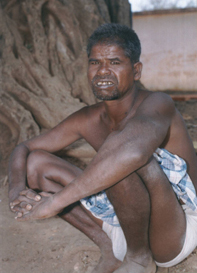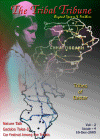Tribes Of Bastar
|
Bastar a district of Chhatisgarh, the youngest state of India. It is a land of Marias and Murias who have preserved their ancient culture. It is (undivided Bastar) surrounded by Orissa in the east, Andhra Pradesh in the south, Maharastra in the west and Damntari, Durg, and Rajnandgaon district of its own state. It extends from 11.46º to 20.34º North latitude and lies between 80.15º and 80.01º east longitude. Bastar dominated the tribals and natural resources. It is a mix of plains in the north and, hills and plateau in the south. Indravati, Sabri, Kolab, Mahanadi, Sankini, Dankini, Kanger, Norangi, Kotari etc are the main rivers supply the water to the area.
The ingress of population in the area is gradually increasing. The original inhabitants of the area are tribal folk viz., Abujhmaria, Bison-Horn-Maria, Muria, Bhatra, Halba, Dorla, Dhurwa etc. These tribal folks are distributed sporadically in the district, of which Abujhmaria are confined in North Western part, Dandami Maria are in South Central i.e. in Dantewada region, Muria are in north and north west, Dorla are in Southern part and western Bijapur, Dhurua are in South eastern part, Bhatra are confined in Indrabati plain in Northern Jagdalpur while Halba are scattered distributed in north and south Bastar. Apart from them, there are sizable population of immigrants mostly business community from Gujrat, Rajasthan and Uttar Pradesh and some pockets of Bengali refugee settlements who are rehabilitated by the Govt. in various pockets of the district.
str_replace("
Figure 2 Dandamimaria with head dress |
|
|
Figure 3 Muria youth, in preparation for Dance MURIA
The Murias are found mainly in Bastar . Muria means aboriginal. The name Muria has been derived from Mur means a root of palas tree. A sub group of Gond tribe, Murias mainly distributed in the plain forest area at Narayanpur, Kondagaon and Antagarh region of Bastar.
They survive on cultivation and collection of forest produces. The Murias have attracted to the scholars and
others for ghotul organization. Ghotul, the dormitory for the unmarried boys and unmarried girls.
Each and every Muria village has Ghotul. It is observed an important institution of Muria and it is believed the sacred place where never commit a sin. Sonkuwar Mata is their chief deity.

Figure 4 Muria Ghotul
 |
DORLA Dorla call themselves Koya, are distributed in Konta and Bijapur region of Bastar District (undivided) They are primarily agriculturist besides having secondary occupation like hunting fishing and collection of forest products. They have their own traditional council of social control headed by Dhurwa. They worship the deietis like Kirara, Muttal Amma and Gamam. |
|
DHURWA
Originally a section of Paraja, who claimed a separate identity of Dhurwa from the beef eating Paraja. With an approximate number of 42,370(1981Census). They are distributed in central (konta) eastern portion of Bastar. Many of them use Indo Aryan dielect of Halbi. They can also speak Hindi and use Devnagri script. Basketry is their traditional occupation, also do cultivation. Danteswari Mata is their principal deity.
|

Figure 6 Dhurua Patel of Kutumsore village |
HALBA
The Halbas are distributed all over the Bastar, They are divided into two groups viz Purit or Jat halba and Surit or Navi Halba. Cultivations is their main economy. They worship Danteswari mata. The Halba are the old descendants of the old Paik militia. They are a numerically nominal community in Bastar and Chhatisgarh area and are 23,6,375 in number (1981Census). From earlier account it is known that Halba were household servant of the Royal families. Now-a-day’s cultivation becomes their primary occupation and they also work as agricultural labourers.

Figure 7 Halba woman |
|
BHATRA
The Bhatras are found in kondagaon and Jagdalpur Tahasil of Bastar. They are divided in Amnit or Bade Bhatra, Sarangi Mundi and Bata mundi, Masni mara or pita Bhatra. Distributed in the eastern part of Bastar and with an estimated of 117297 (1981Census), speak Bhatri dialect and use Devnagri script. Traditionally they are hunter, gatherer and cultivators. They also make baskets. At present hunting is an occasional phenomenon but collection of forest product still playing a very important role in their economical life. Danteswari Mata is their one of the important Goddess. They have two different religious sects, Jagatlok and Bhagatlok.
|
Figure 8 Bhatra man |
Photographs: By the Author







